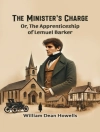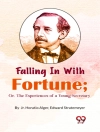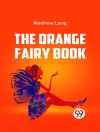In ‘True Riches; Or, Wealth Without Wings, ‘ T. S. Arthur explores the intricate dynamics between material wealth and spiritual enrichment. Set against the backdrop of 19th-century America, Arthur employs a didactic literary style, weaving together rich narrative detail and moral lessons that encourage readers to reconsider the concept of true wealth. The book examines the lives of its characters, revealing their struggles and values while advocating for a life guided by virtue over mere financial gain. The narrative, ripe with allegorical significance, illustrates how one can achieve genuine fulfillment through integrity and meaningful relationships, rather than chasing ephemeral riches. T. S. Arthur, a prominent figure of the American literary scene in the mid-19th century, was known for his advocacy of social reforms through literature. His background as a writer for periodicals and his involvement in the temperance movement greatly influenced his thematic emphasis on morality and personal virtue. Arthur’s insights into the societal pressures of wealth during this transformative era reflect his own views on the pitfalls of materialism, making this work a critical commentary on the values of his time. ‘True Riches’ serves as a profound reminder of the enduring significance of moral character in an increasingly consumer-driven world. Readers seeking a thoughtful exploration of wealth’s true nature will find Arthur’s reflections both pertinent and enlightening, making this book a valuable addition to the canon of American moral literature.
Giới thiệu về tác giả
Timothy Shay Arthur, known as T. S. Arthur, was a prolific 19th-century American author best recognized for his temperance novels and diligent efforts to promote a lifestyle of sobriety. Born on June 6, 1809, in New York, Arthur’s career spanned several decades, wherein he penned an extensive collection of works that revolved around the implications of alcohol, family values, and the moral fabric of society. One of his well-regarded pieces, ‘True Riches; Or, Wealth Without Wings, ‘ underscores the ethos that happiness and moral integrity are not predicated upon material wealth but are the outcome of virtuous living and personal contentment. Arthur wielded his pen with a didactic purpose, aiming to inspire his readers toward self-improvement and ethical conduct. Among his over 100 published works, ‘Ten Nights in a Bar-Room and What I Saw There’ stands as one of his most enduring, serving as a catalyst for the temperance movement of the time and solidifying his stance on the perils of alcohol. His literary style can be characterized as moralistic and sentimental, resonating with his audience by capturing the zeitgeist of middle-class America’s concerns and ideals. His works, while less read today, were instrumental in shaping social conversation during the 19th century and reflect the urgency and reformative spirit that characterized much of Arthur’s literary agenda. He passed away on March 6, 1885, leaving behind a legacy enveloped in the advocacy of temperance and the pursuit of virtuous living.












